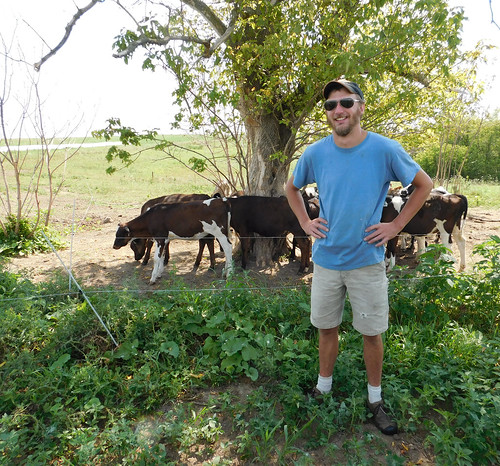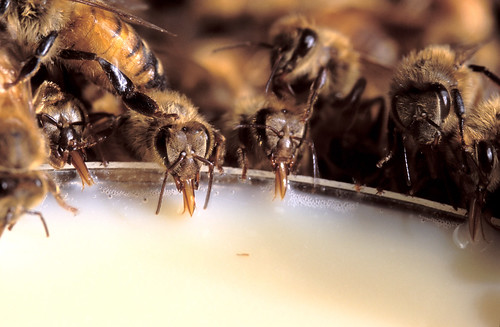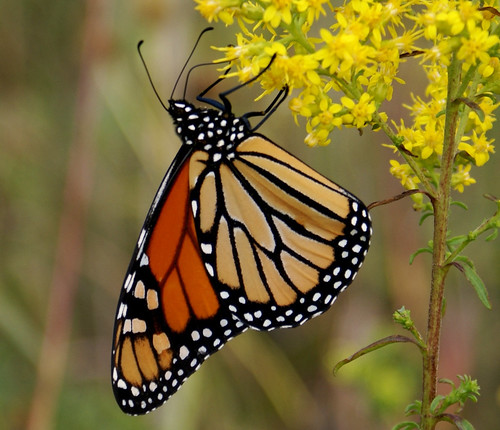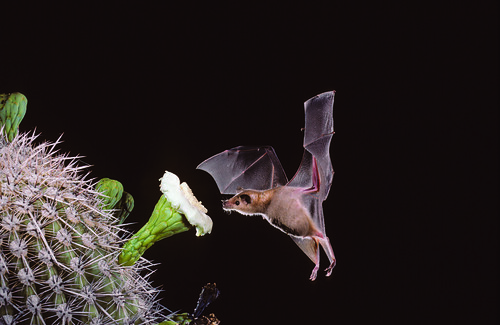Day and night, pollinators are at work all around us—and it’s not just honey bees. Did you know that pollinators are responsible for one out of three bites of food we eat? If you’d like to learn more, we’ve pulled together five blogs from 2015 highlighting some surprising facts about these busy helpers and the many ways different USDA agencies, farmers, ranchers and other partners are working to keep all pollinators healthy.
When USDA’s Natural Resources Conservation Service (NRCS) launched a new coordinated effort to improve honey bee habitat in 2014, Fitton was one of the first to participate. He works closely with NRCS to make improvements to the land that provide better forage for his cattle, improve existing hayfields and convert former corn fields into healthy pasture.

Reed Fitton has enhanced honey bee habitat on the pastures he manages near Gays Mills, Wisconsin.
In exchange for their labor, flowers provide bees with pollen and nectar as food. But few people wonder what’s available for bees to eat when there are few plants blooming in the late fall and early winter.

MegaBee, an artificial diet developed by ARS and S.A.F.E. R&D, LLC, helps sustain honey bees in the face of pressures such as poor nutrition, pathogens, parasites and sublethal exposure to pesticides.
One question many people are asking is: how can we incorporate more pollinator habitat into our communities, agricultural lands, and forests? Ongoing research by the U.S. Forest Service demonstrates that the number of pollinators in our landscapes can be increased through agroforestry and other land management practices.

Blueberry bushes provide food for both bumblebees and people. (Photo credit: Nancy Adamson/ National Agroforestry Center.)
Because monarch butterflies are often on the move, they need to have the right plants at the right time along their migration route, including milkweed, which is the sole food source for monarch caterpillars. We worked with butterfly experts across the United States to choose the best plant species for monarchs based on geographic location and value to monarchs.

NRCS is working with farmers and ranchers to create and enhance habitat for monarchs. NRCS photo by Gene Barickman.
Bats are vital to the health of our environment and economy. Invisible or unobserved to many, bats are hard at work every night in many places throughout the world doing what bats do: eating tons of insects, pollinating flowers and spreading seeds to grow new plants and trees.

Lesser long-nosed bat pollinating a saguaro cactus in the desert Southwest. Photo: Merlin D. Tuttle, Bat Conservation International
No comments:
Post a Comment
Note: Only a member of this blog may post a comment.